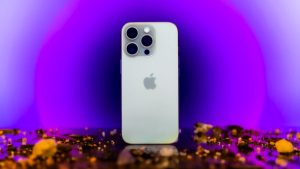🖌️ Introduction
Ever been captivated by the dreamy worlds of Studio Ghibli? You’re not alone. There’s something magical about their art style — it’s nostalgic, enchanting, and deeply human. If you’ve ever wanted to create Ghibli-style images yourself, you’re in the right place. Whether you’re an artist or a beginner, let’s dive into the world of Ghibli and learn how to make your own breathtaking visuals.
🎨 Understanding the Ghibli Aesthetic
The Signature Traits of Ghibli Art
Studio Ghibli’s art is known for its delicate linework, soft lighting, and emotional storytelling through imagery. Think warm pastels, misty forests, floating castles, and cozy kitchens. It’s fantasy grounded in reality.
Colors, Textures, and Composition
The palette leans heavily on natural tones — greens, blues, warm browns, and golden sunlight. Textures are painterly but never harsh. Compositions are balanced and breathe with space, inviting the viewer in.
Influence of Japanese Culture and Nature
Nature isn’t just a backdrop — it’s a character. Mountains, rivers, rural villages, and Shinto spirituality are woven into nearly every frame. This grounding in reality makes the fantasy elements even more magical.
🧰 Tools You Need to Get Started
Digital Art Software Options
-
Procreate (for iPad users)
-
Photoshop (industry standard)
-
Krita and Medibang (free options)
Tablets and Drawing Devices
A pressure-sensitive stylus is key. iPads with Apple Pencil or Wacom tablets are perfect for this style.
Optional AI Tools and Generators
You can speed up your process or generate inspiration using AI art tools like Midjourney or DALL·E with proper prompt engineering.
✏️ The Drawing Process Explained
Sketching the Framework
Start with loose, clean lines. Ghibli drawings are never too sharp — keep it soft and flowing.
Choosing the Right Color Palette
Muted, natural tones work best. Think cloudy skies, misty greens, and sunset oranges.
Painting with Softness and Depth
Use watercolor brushes or airbrush tools to blend colors. Add depth with gentle lighting and layered shadows.
🌿 Key Elements to Include
Whimsical Architecture
Think slanted rooftops, crooked chimneys, wooden doors, and hand-painted signs — full of character.
Lush Landscapes and Forests
Ghibli forests are alive — full of detail, mystery, and movement. Add bugs, wind-blown leaves, and overgrown paths.
Magical Creatures and Characters
From forest spirits to talking animals — blend the fantastical into the real seamlessly.
Weather Effects and Atmosphere
Fog, rain, dust, or even glowing air particles — these little touches add emotion and mood.
👧 Creating Characters Ghibli Style

Round Faces, Expressive Eyes
Ghibli characters often have childlike proportions — big eyes, small noses, round features.
Clothing and Cultural Details
Simple, loose-fitting clothes with cultural touches, like sandals, aprons, or traditional prints.
Conveying Emotion Through Simplicity
A Ghibli character’s feelings are clear with minimal lines — use posture and expression wisely.
📽️ Animation vs. Still Image Techniques
Static Backgrounds with Storytelling
Even without motion, a Ghibli-style image should suggest a story: a half-eaten meal, a waiting cat, or an open window.
Using Motion in Still Art
Add flowing elements — wind in hair, water ripples, drifting clouds — to imply movement.
🤖 Leveraging AI Tools for Ghibli Art
How to Use AI Image Generators
Use tools like Midjourney or DALL·E. Try prompts like:
“Studio Ghibli style landscape, soft watercolor, whimsical village, golden hour lighting”
Prompt Tips for Ghibli Style Images
Be specific: include mood, setting, time of day, and visual style.
Editing and Enhancing AI Creations
Bring your AI image into Photoshop or Procreate and add hand-drawn details for a human touch.
🪄 Step-by-Step: Creating a Ghibli Scene
-
Choose a Scene Theme: Cozy house? Floating city? Peaceful forest?
-
Sketch the Basic Layout: Block out where everything goes.
-
Add Details and Background: Trees, flowers, animals, furniture.
-
Apply Color and Light: Keep it soft and glowy.
-
Polish and Finish: Add texture, shadows, and a story.
🚫 Common Mistakes to Avoid
-
Overcomplicating the Scene: Ghibli is simple, yet deep.
-
Losing the Softness: Avoid hard edges and dark outlines.
-
Ignoring Emotional Tone: Your image should feel something.
🎥 Inspiration Sources
Top Ghibli Films to Reference
-
My Neighbor Totoro
-
Spirited Away
-
Howl’s Moving Castle
-
Kiki’s Delivery Service
Nature and Travel Photos
Mountains, rice fields, European towns, foggy woods — all goldmines for Ghibli-style ideas.
Artbooks and Fan Art
Check out Ghibli artbooks or Pinterest boards for a flood of visual inspiration.
📝 Practice Makes Perfect
-
Study Frame-by-Frame Animation: Watch Ghibli scenes in slow motion and draw stills.
-
Draw Daily in Ghibli Style: Focus on backgrounds, characters, and emotional tone.
-
Join Online Art Communities: Try DeviantArt, Reddit, or Discord groups.
📢 Sharing Your Work
Best Platforms to Share Ghibli Art
-
Instagram
-
ArtStation
-
Behance
-
Pinterest
How to Get Feedback and Improve
Ask for constructive critiques. Engage with fellow artists.
Entering Fan Art Contests
Look out for Studio Ghibli-themed contests on platforms like DeviantArt and Instagram.
🌈 Final Thoughts
Creating Ghibli-style images is like crafting a dream — a quiet, whimsical, deeply emotional dream. It takes patience, love for detail, and an eye for beauty in the ordinary. Let nature inspire you, let your emotions guide your brush, and remember: every Ghibli scene tells a story — so should yours.
❓FAQs
1. Can I sell art in Ghibli style?
Technically, yes — but avoid using official characters or copyrighted scenes. Create inspired work, not direct copies.
2. What AI tool best mimics Ghibli style?
Midjourney and DALL·E are great with the right prompts. Try “Ghibli style, watercolor, forest landscape at dusk.”
3. Is traditional drawing better than digital for this style?
Not necessarily — digital tools can replicate traditional effects beautifully. It’s about how you use them.
4. How do I create the “soft light” Ghibli look?
Use airbrush or soft brush tools. Avoid harsh contrasts. Layer colors gently.
5. Where can I learn more about Ghibli techniques?
Look for interviews with Ghibli artists, frame breakdowns on YouTube, and study their official artbooks.





https://shorturl.fm/IPXDm
https://shorturl.fm/YZRz9